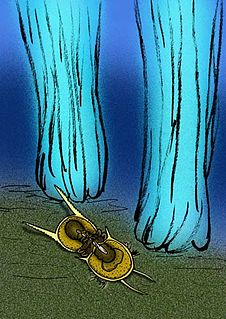At the end of each Major League Baseball season, the league leaders of various statistical categories are announced. Leading either the American League or the National League in a particular category is referred to as a title.

Pleuroctenium Hawle & Corda (1847) is an agnostid trilobite belonging to the family Condylopygidae Raymond (1913). The genus occurs in Middle Cambrian (Drumian) strata of Canada, the Czech Republic, England and Wales, France, and Sweden.
Diplorrhina Hawle and Corda (1847) is a genus of trilobite belonging to Order Agnostida. It lived during the early Middle Cambrian in what are now the Czech Republic and the North Siberian plateau. as in members of the family Peronopsidae it lacks a preglabellar furrow. Both cephalon and pygidium lack spines. It is difficult to distinguish Diplorrhina from many other peronopsids.

Cyclopygidae is a family of asaphid trilobites from the Ordovician. Cyclopygids had an extratropical distribution, and there is evidence that they lived in darker parts of the water column. Cyclopygids are characterized by enlarged eyes, with a wide angle of view, both horizontal and vertical, reminiscent of the eyes of dragonflies. These typically touch the glabella directly on the side. Cyclopygids all lack genal spines, but Symphysops carries a forward directed frontal spine on the glabella. It is presumed that at least the members of the genus Pricyclopyge swam upside down and had bioluminescent organs on the third thorax segment. Cyclopygids had between 7 and 5 thorax segments, a wide and stout axis, and short side lobes.

